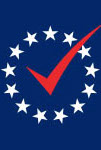Date Published: 2008-11-30
Author(s):
Sarah M. Sled, Massachusetts Institute of TechnologyAbstract:
The 2003 California recall election provides a unique opportunity to assess the impact of variations in ballot design and voting methods on the voting accuracy of citizens. Analysis of the results of the California Recall election demonstrates that candidates who were vertically adjacent to the top three vote getters received “extra” votes in the recall election – a vertical proximity effect. Combined, these ‘neighbor’ candidates received approximately 4 votes per thousand votes the top candidate received. The pattern is consistent across the candidates neighboring Schwarzenegger, Bustamante, and McClintock, and is noticeably higher for punch cards than for optical scan or touch
screen voting technologies.
The vertical proximity effect is a variation on the theme of ballot formatting issues
highlighted in the Florida recount of the 2000 presidential elections. Although there are many possible explanations for this pattern, we think they are caused by difficulties voters have aligning names with voting options. For example, lefthanders might have greater difficulty than right-handers aligning the hole in the punch card with the name; and people with poor vision might have difficulty with alignment in all technologies. While 4 erroneously cast votes in 1000 is easily the margin in a close election, this effect is not of the magnitude of the butterfly ballot effect documented in the Florida elections. That said, the appearance of clear vertical proximity effects and their variance across ballot types suggests that the randomization of names on the ballot in California is not neutral and the need remains for careful systematic evaluation of ballot designs. Elections are not the time to test ballot designs.
